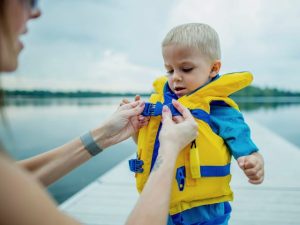Pathophysiology on Drowning
The physiology of drowning relates to discrete events: immersion (upper airway above water) and submersion (upper airway under water). For children, drowning can be silent. As fluid gets into their upper airway, they cannot scream or shout.
The upper airway comprises the nose, pharynx, larynx, and extra-thoracic part of the trachea. What happens when water enters a child’s upper airway? Spasms occur, driven by reflexes protective of human life.
Any irritation of the laryngeal mucosa can lead to laryngeal closure, protection against foreign bodies entering the tracheobronchial tree. Drowning beings with the larynx.
The first gasp of water into a child’s mouth that stimulates laryngeal spasm and, later, hypoxemia through breath holding. For children, their ability to prevent water from going into their lungs lasts less than thirty seconds.
90% of drowning cases occur in freshwaters such as rivers and pools. This skewed presentation hints to the physiological effects of seawater and freshwater drowning on the human body, even though the result is death.
The effects of seawater on pulmonary surfactant include blood-air barrier disruption, pulmonary edema, inflammation, and other hypertonic stimulation. Surfactants are essential for gas exchange and alveoli function.
Salt water, being high salt (sodium), prevents seawater from crossing the membranes of the peripheral capillaries. Instead, the blood and seawater cross over the membranes and into the lungs. What results is hypoxia, death and drowning in the victim’s own fluids.









